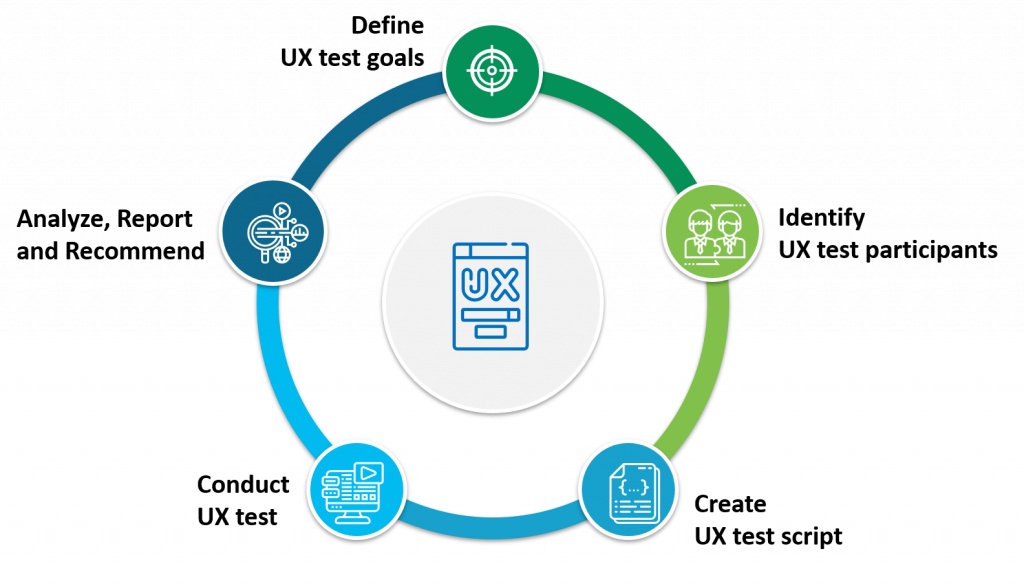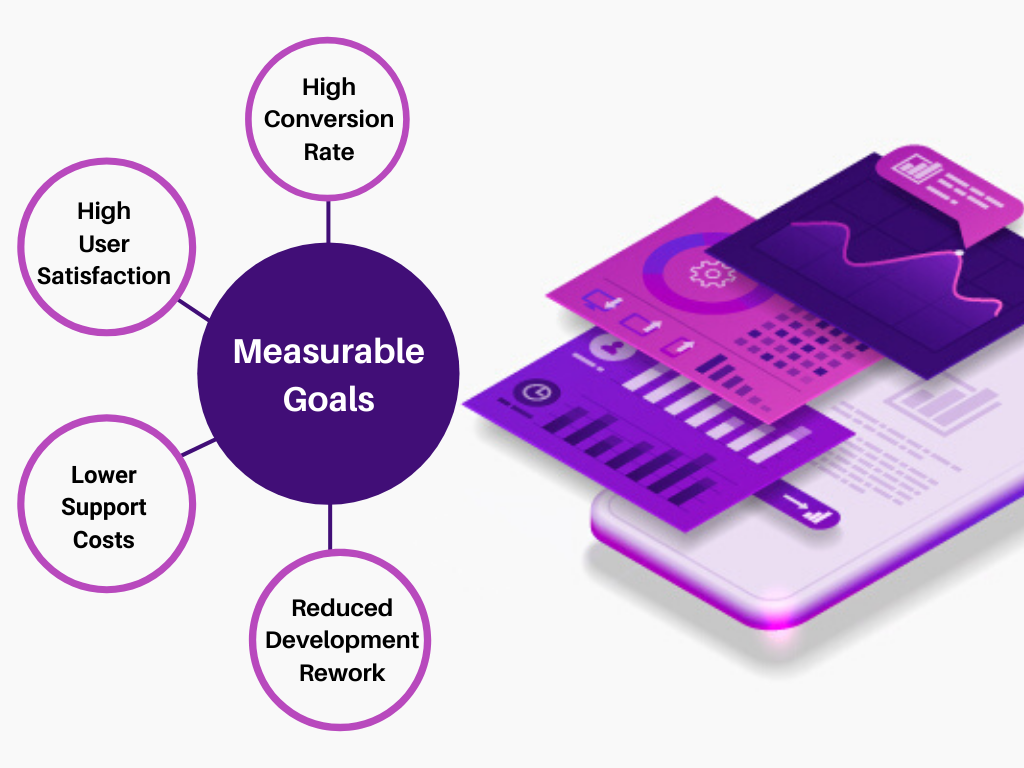



UX has become a must-have investment for businesses involved in product development. So, if the product is functional, is there a need to invest in UX? Many businesses are still thinking whether investing in UX is justifiable. It’s true, product development itself is a lengthy process. Thinking about UX means extra time and investment for an organization.
One of our clients owns a classifieds site for selling and renting recreational vehicles. They wanted us to recommend changes to improve usability and conversion rate. We performed the necessary usability tests and shared a comprehensive User Experience Evaluation report with 80+ recommendations. Changes made as per our User Experience recommendations can lead to ~20% potential improvement in conversion rate on the client’s site.

In this blog, we will touch upon why it is worth investing in UX, and how there can be enormous business benefits with great user experience. We’ll also look at use cases to understand the impact of experience design on sales growth.
Why a Business Needs UX?
Well-built products give businesses an edge in today’s competitive market. For businesses with online storefronts, sales and revenue depend on the quality of UX. On the other hand, a bad UX can affect the productivity of enterprise users who use products and services for performing tasks on a daily basis. And what if UX issues get identified after a fully-functional product, new expenses may emerge for the business to rectify issues.
As per a recent study on Usability, the cost of rectifying an error after development can be 100x more than rectifying it before development. In an ideal situation, these errors can be rectified in the initial stages of development with UX tests.
Roadblocks in Design and Development of Great Enterprise Software
According to a survey conducted by UserZoom, 64% respondents said that the integration of user research into the product development process is the topmost challenge for their business. The approach to designing, testing, and developing Enterprise UX (eUX) for B2B customers is different from creating a great UX for B2C consumers.
Today, an efficient eUX is considered as important as UX for consumer products. Business leaders who have realized the benefits of UX for enterprise users are thinking about intuitive dashboards with integrated data and such seamless UX solutions. Whether the products being developed are B2B or B2C, UX modifications based on usability tests add to the efficiency of the product.
Some of the major roadblocks in design and development of UX-friendly software include:
- UX team and the development team working in silos lead to hurdles during the integration of design ideas throughout the development process.
- Stakeholders of a business are likely to be well-versed about the industry they operate in. However, creating UX merely based on what the stakeholders think the user wants may not be the right way always. While developing UX, inputs from the user can be helpful to precisely understand what a user wants. Business leaders should be able to trust usability tests involving real users for evaluating the usefulness of a prototype or an existing product’s features.
- Human-centered product development requires essential user research and refinements. UX process for a product is not a one-time affair. Businesses who fail to constantly improve throughout the product development process and after may risk missing out on areas to enhance user experience.
- Acting on meaningful UX test recommendations promptly is necessary for a UX review to be successfully utilized.
Usability Testing for UX Assessment and Enhancement
As per ISO 9241-11:2018 of the International Organization of Standardization, usability can be defined as the extent to which a system, product or service can be used by specified users to achieve specified goals with effectiveness, efficiency and satisfaction in a specified context of use. Therefore, we can say that usability evaluation depends on the context of use which is to be identified in the initial assessment of a UX testing project. The purpose of usability tests is to check whether the product is effective, efficient and appreciated by the end-user.
Let’s look at a UX test requirement scenario for enterprise users. Say, a business wants to test UX of users who need dashboards to access data for performing tasks.

- Define Objectives and Set Goals
The UX test will depend on the tasks to be reviewed. These tasks should be Key Performance Indicators (KPIs) for the stakeholders of the business. Generally, a couple of meetings between the UX team members and the stakeholders are held to set clear goals for a UX Evaluation project. To ensure that clear expectations are set at the beginning of the project, the UX test objectives and goals are finalized before creating the test plan.
- Identify User Profile for Testing
To test the usability of the functions required to perform the tasks, a precise understanding of the user profile is necessary. User research helps UX testers to shortlist the test participants.
- Create Test Script
Next, the UX evaluators create a test script outlining the protocol to be followed for systematic testing of the usability of the identified tasks. Also, the test location depends on the location and availability of the test participants. If the users are scattered across geographies, remote usability testing is a viable option. The test plan will differ for businesses across verticals as per their target audience and test goals.
- Update Designs and Test Iterations
As per research by NN Group, you need to test with at least 15 users to discover all the usability problems in the design. Also, after the first study (i.e. the pilot test) with five participants has found 85% of the usability problems, you will want to fix these problems in a redesign. Continuing to run usability tests without rectifying the identified issues will result in additional investments rising from testing ineffectiveness.
- Reporting
Once the required test data is available, the project team submits a detailed User Experience Evaluation report with their recommendations backed by user inputs. For continuous improvement, UX research experts define new goals and repeat the UX testing process.
Planning UX Tests for Product Development
Wondering when is the right time to perform UX tests? Well, it depends on your product. You can run a UX test in two scenarios – when you are developing a new product or when you already have a functional product. As per experts, testing before the commencement of development leads to significant savings on development costs later.
In the initial phase of product development, you can identify areas that can be tweaked to build a user-friendly design. Doing so will ensure that redesign costs and efforts can be saved when the product is launched. Also, a better-quality product can attract users as well as investors.
The need for a UX test arises for an existing functional product if it is not receiving the necessary traction or requires enhancement for improved sales. A few tweaks based on the test analysis can improve product quality and have a positive impact on sales. Today, many modern-day businesses are aware of the potential of UX. These businesses are already treating User Experience Evaluation as a critical component of their product development process.
Some of the measurable goals that can be achieved with UX design and testing are:
- Higher Conversion Rate: Better reviews and recommendations from users lead to higher conversion and retention of customers.
- Higher User Satisfaction: Higher Net Promoter Score (NPS) and System Usability Scale (SUS) improves the confidence in the quality of product against competition.
- Lower Support Costs: Less and shorter calls to customer support lead to savings for the business.
- Reduced Development Rework: Less user and client rejection lead to less rework and faster development. Thus, saving time and costs for the business.

How Intervention of UX Experts Help Your Business?
When UX specialists take complete ownership of UX for improving product quality, the business enjoys many benefits. Here’s an elaboration on the business benefits of UX:
- Improved Conversion Rate with UX-friendly Dashboards and Data Visualization Solutions
Seamless data access with data visualizations can sometimes communicate more than written words. Intuitive dashboards enable the users with user-friendly functions to act on the consumed data and perform the desired action for a sales conversion to happen quickly.
- UX Review - Unbiased Recommendations to Improve UX
A deeper analysis of what exactly is preventing a user from complete utilization of the product or service is undertaken by UX experts during the UX review process. What follows is a detailed report of the issues and the recommendations to solve those issues.
- Build Better Product Concepts
Developing new products is a humongous task. The common mistake that businesses make while developing new products is focusing only on providing what the user needs. Focus on UX will ensure that the user is able to easily consume the solution that is provided. If the journey to use a product or service is difficult for the user, the user may move on to another solution that has fewer features but is easier to use.
- User Experience Modernization
Whenever a product or service is analyzed, the functionality, as well as the design, is rated. Usability is a big word in a market where similar concepts compete for a larger market share. With UX tests, a product can find an appreciable place amongst other products on product comparison charts followed by the industry.
Xoriant’s Expertise in UX
Xoriant has expertise in Usability Testing and User Experience Design. We helped a startup specializing in AI-based network security to enhance their innovative product concept. They wanted us to create an experience that highlighted their product features. Our UI Designs highlighted the speed and accuracy of the product. The designs enabled the client to acquire more customers at security conferences and also, attracted funding for expansion.
To conclude, usability tests are part of a continuous improvement process. It is not about the quantity of tests or the number of participants but the quality of outcomes that matters for businesses. Access to these test outcomes in the early stages of product development enables companies to integrate UX at the development stage and minimize development costs as the product grows.
Need a partner who can ensure seamless, rich UX across platforms and devices?
References:
https://www.userzoom.com/blog/four-top-ux-challenges-for-2020-and-how-to-solve-them/
https://www.iso.org/obp/ui/#iso:std:iso:9241:-11:ed-2:v1:en
https://www.nngroup.com/articles/why-you-only-need-to-test-with-5-users/



 View Previous Blog
View Previous Blog




